Several months ago Thor3D received two dozen boxes with casings for the Calibry scanners from our injection molding manufacturer. They were all, unfortunately, defective! What was supposed to be a perfectly smooth, shiny, white plastic was covered in gray spots. The supplier quickly sent us a new batch, but a question remained: what to do with the defective lot? We couldn’t just throw them out, as it would go against our aspiration of being a totally “green” company. We had to find a purpose for this plastic. We had to give it a second life.
Then, a “lightbulb” moment. We could give these casings to an artist, who would use these surfaces as a canvass. Then, we would sell the resulting artwork and donate the proceeds to a green, international non-profit. We chose the Global Footprint Network (www.footprintnetwork.org) to donate to, as the organization does a lot of work in sustainability and biodiversity. We also decided to list the artwork on the OpenSea blockchain platform because it is the world’s first and largest marketplace for digital art.
Once the project was completed, Victoria, the artist, wrote an essay describing her process and vision.
This whole project was solely experimental. First, started as an alternative to wasteful disposal of plastic, it grew out of mere “project” boundaries into something more, which has a life of its own.
Theodor Adorno, a German philosopher, once wrote that a work of art, like any other cultural production, cannot be separated from the social context. However, it’s not a plain reflection. Instead, the relationship between art and society has a dialectical nature. There is always an indissoluble bond between the subject and the object; spectator and work. This dialectical nature makes art enigmatic: the spectator seeks true content of the work, discarding fixed interpretations through his/her ideological paradigms.
Having this concept in mind, I will not try to provide a fixed interpretation of the Plastic Form artwork. I will refer to a number of artistic concepts, which influenced my project, thus leaving the spectators with their own stories and theories.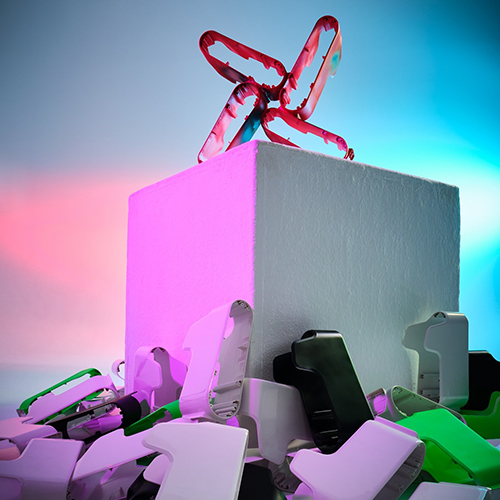
Plastic Form -/-1
Being a true admirer of abstract art and avant-garde, I referred to constructivism, as the most suitable art movement to explore the artistic possibilities of plastic 3D scanner casings. One of the pivotal ideas of the constructive art – the materials dictate to an artist the form of the artwork (unlike the traditional fine art, where an artist transforms the materials). This approach was regarded as archetypal modern style, which embodied the dynamism of modern life.
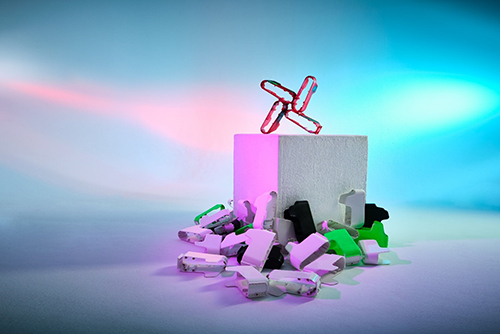
Plastic Form -/-2
Elongated, glossy and rounded body shape of the scanner dictated particular forms and paint I could use. On the one hand, it restricted me. On the other – being led by object’s form pushed me into breaking my own boundaries.
Another kernel of the constructive art movement – composition is replaced by the construction. In this sense the conventional understanding of esthetics is abolished. The artforms were created not for the sake of art and beauty, but to carry out a fundamental analysis of the materials and forms of art.
I didn’t stick to a particular “composition”. Instead, I juggled the objects observing how they behaved and to what extent could I carry on my ongoing dynamic construction.
Despite constructivism having the most influence in this artwork, it wasn’t limited solely by it.
Suprematism, which glorifies plain geometric forms and colors, can also be traced in the Plastic Forms -/-. I blended it with neon colors to symbolize the modern age we live in.
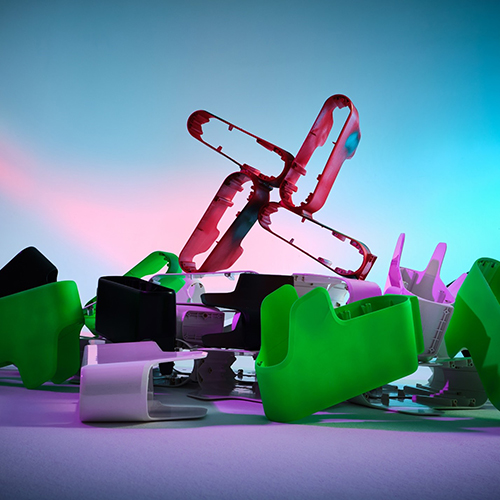
Plastic Form -/-3
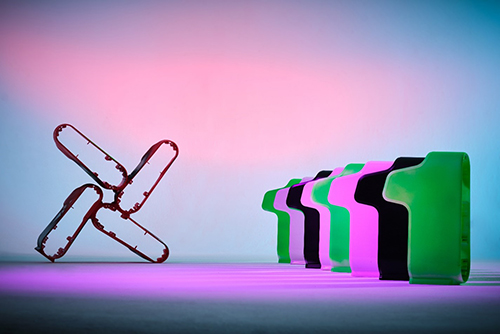
Plastic Form -/-4
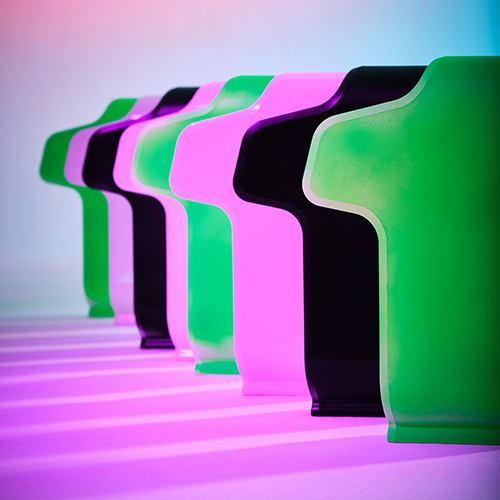
Plastic Form -/-5
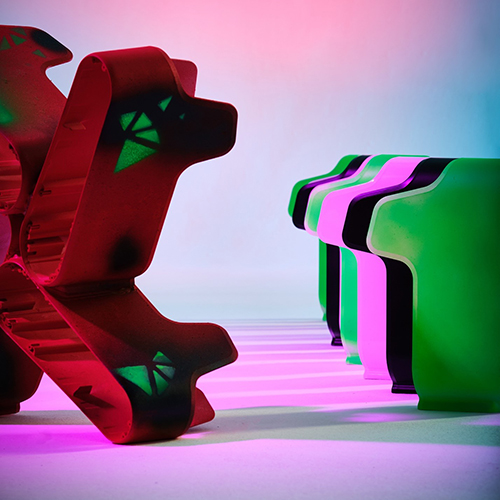
Plastic Form -/-6
Selling digital art is difficult. Why pay for a collection of photos that anyone can copy and paste onto their hard-drive? That’s why we used a block-chain platform for NFTs (non-fungible token). So while anyone, could indeed, copy the image, it would be like owning a print of the Mona Lisa, instead of the original. “Non-fungible” means that the original is unique and is verifiable with the help of the Ethereum block-chain.
So we listed our collection of these photographs as an NFT on OpenSea. You can bid for them until 13.07.2022. The proceeds will be donated to Global Footprint Network. Help us assuage our guilt and make our planet a bit greener.
